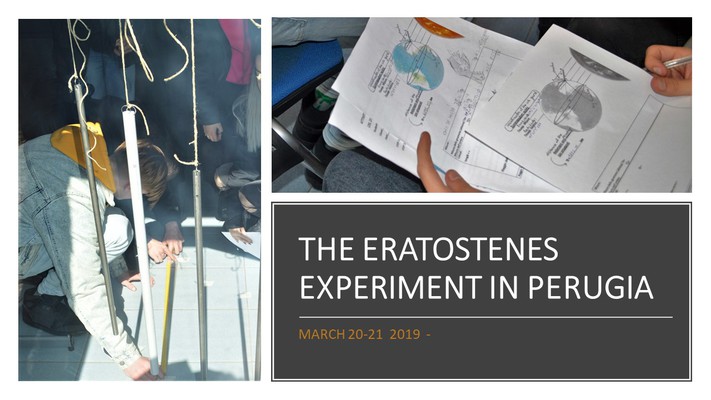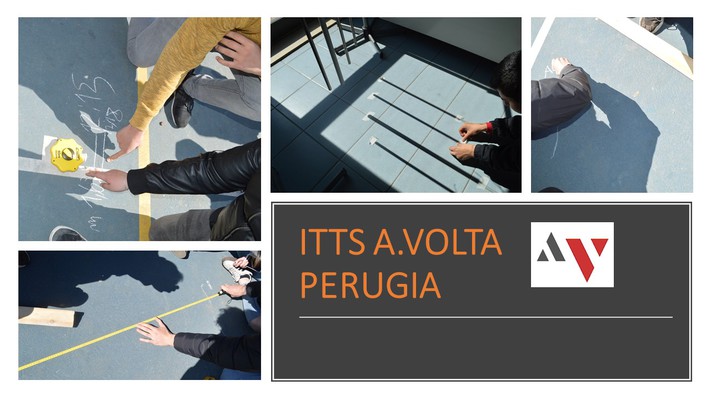We did!!!! We learned!!!
We calculated the radius of the Earth under the bright sun!!!
Our students' calculations:
in Spain: 6397,7388 km,
in Greece: 6350,355 km,
in Germany: 6393,6860 km,
in Italy - Team 1: 6410,101 km and
in Italy - Team 2 6371,54 km.
Today we know that the radius of the Earth is 6371 km. Congratulations Team 2 from Italy for the exact result!
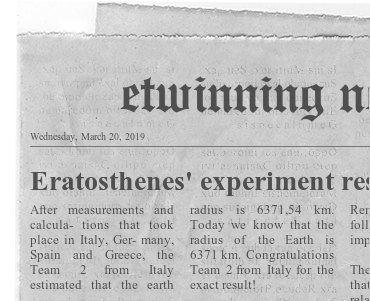
As a conclusion...
The usefulness of the execution of the Eratosthenes' experiment by the students is significant for the following reasons:
They:
- Learn a part of the history of Mathematics
- Collaborate with their classmates
- Compare results
- Apply Mathematics in real life
- Participate in outdoor activities
- Combine Maths and Joy
- and ...
Eratosthenes of Cyrene ( Ἐρατοσθένης ὁ Κυρηναῖος) 276 BC-195 BC
He was a Greek mathematician, geographer, poet, astronomer and music theorist. That was the reason his devotees were calling him “Πένταθλον” –“ Pentathlon” as he had proved himself to be knowledgeable in every area of learning. According to an entry in the Suda (a 10th-century reference), his critics scorned him, calling him “Βήτα” – “Beta” (the second letter of the Greek alphabet) because he always came in second in all his endeavors.
Among all his significant achievements, we have to notice that:
He is known for the “sieve of Eratosthenes”, which is an efficient method of identifying the prime numbers.
He became the chief librarian at the Library of Alexandria.
And most of all, Eratosthenes is best known for being the first person to calculate the circumference of the Earth, which he did by comparing angles of the midday Sun at two places in Egypt, in Alexandria and Syene (ancient Assouan)
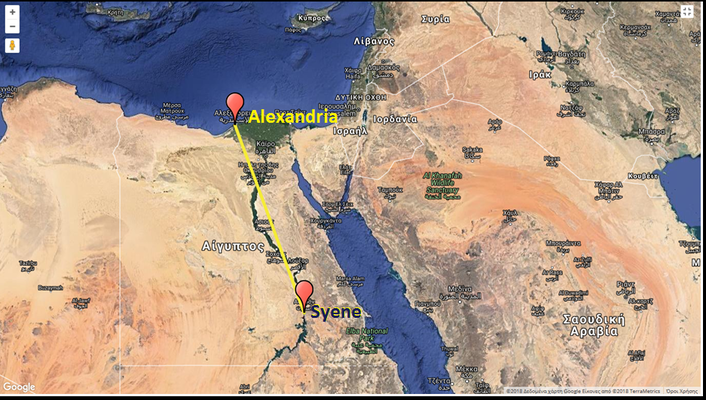
Eratosthenes' historical experiment
Eratosthenes' method is described and explained in this “geogebra” file:
https://www.geogebra.org/m/YvqbpGws#material/Jr2f7mGV,
which has been created by the Greek Erasmus team and is featured in our Geogebra “MATHS” book.
That geogebra book https://www.geogebra.org/m/YvqbpGws has been our outcome for the Erasmus project “MATHS” (2015-2017).
20 of March 2019
Every school year, on 20 of March, which is the day of the Spring Equinox and the moment at which the center of the visible Sun is directly above the equator, the Hellenic Physics Society in collaboration with the Hellenic Institute of Astronomy, Astrophysics, Space Applications & Remote, organize an action that is called “Eratosthenes’ experiment”
The annexes of the HPS from the Greek prefectures of Serres, Lakonia, Pieria, Argolida, Kos and Thesprotia coordinate and are responsible of it.
According to the instructions of the experiment: https://www.astro.noa.gr/gr/eratosthenes/experiment.html?fbclid=IwAR0OWRP3ee1Vu1Tb-ZH7b5z9IhI3pHEtjua0XXuWAqGguIkG, the students were requested to measure the length of a vertical pole and the length of its shadow, in their school yards, to make calculations and thus to find out the length of the radius of the Earth and after that, the length of the circumference of the Earth. The students had to fill in their calculations on spesific forms in order to work easier.
This school year more than 20000 students and 1500 teachers from 650 schools all over Greece and not only, carried out that experiment. We are very happy, because this school year our partners from Germany, Spain and Italy also carried it out, as the weather conditions (sunny day) were very helpful. We hope that next year, the partners from Iceland and the Netherlands will be more lucky with the weather.
All schools which participated in the experiment can be found on this google map:
Our working procedure
It was the 20th of December 2018 when, for first time, we (the teachers), talked online about the Eratosthenes' experiment during an online etwinning event that was organized by the Italian team in order to discuss the details of the 3rd meeting in Sevilla. Then we, the Greek teachers, suggested our partners' participation in this Historical experiment.
In February 2019 the Hellenic Physics Society informed the Greek schools that the experiment was going to be carried out on 20 March. Then we started to plan that action with our colleagues-partners under the instructions of the HPS.
Many emails were excanged among us,
During the preparation of the action we faced some difficulties. As all the instructions and the details of the experiment were sent in the greek language, we had to translate in english everything: the application form, the worksheet and all sent messages and send back everything to our partners, as you can see in the below documents:
Αγαπητοί.docx
ekfe 1.docx
ekfe part 3.docx
We made a draft of a translated worksheet and our partner from Spain made a more clear translated worksheet. That worksheet was forwarded to all partners and the students worked on it:
SER_Eratosthenes_Φ_Ε-1.pdf
translated draft form.pdf
SER_Eratosthenes english.pdf
Finally, we overcame all difficulties under a strong collaboration. In each country the teachers explained the experiment to their students. So, they went to the school yards, they took their measurements and made the calculations succesfully ... as you can see at the top of that page and below .......
Our results
In Wetzlar- Germany:
Goetheschule Wetzlar, Germany_Form.pdf
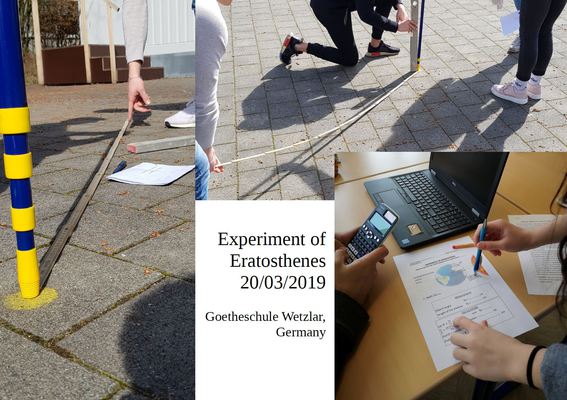
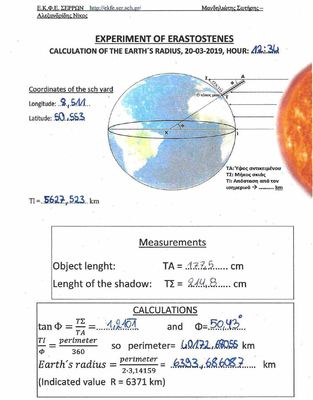
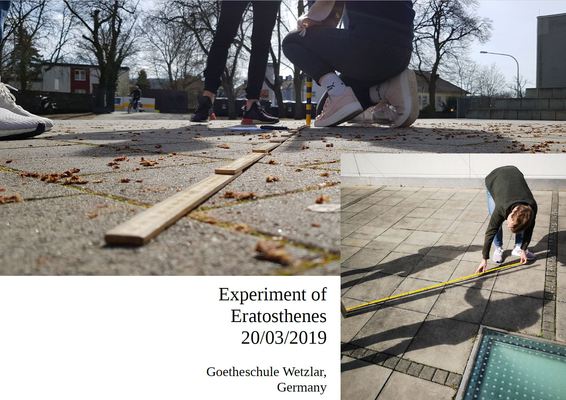
In Sevilla - Spain:
africa y lamiae ingles erat.pdf
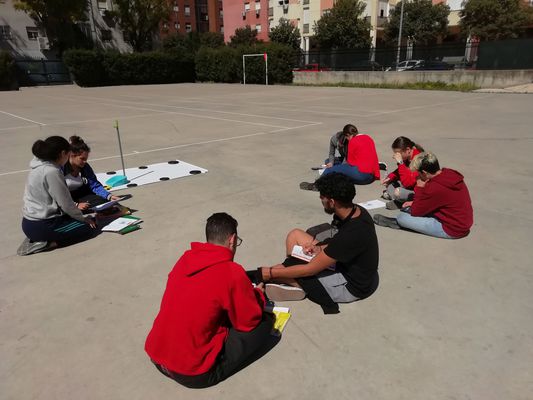
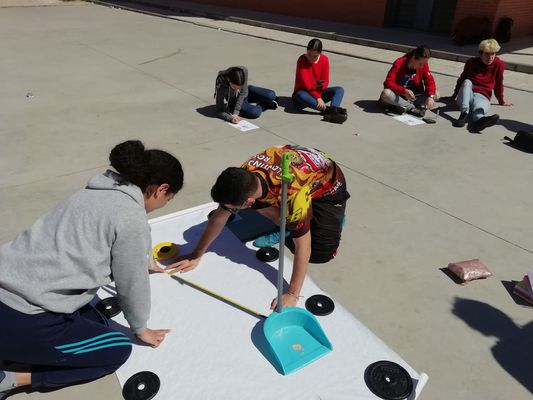
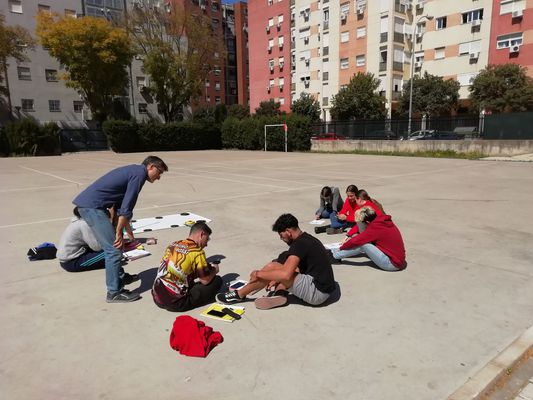
in Kissamos- Greece:
Scan erat form.pdf
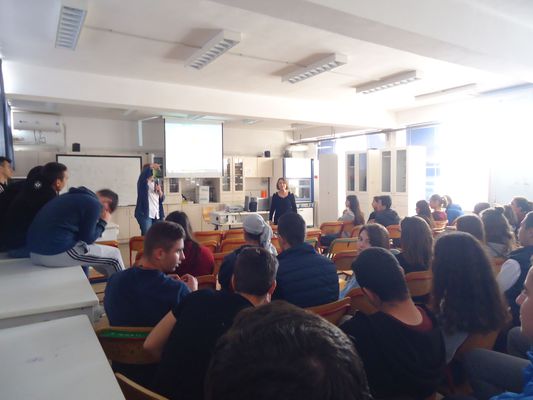
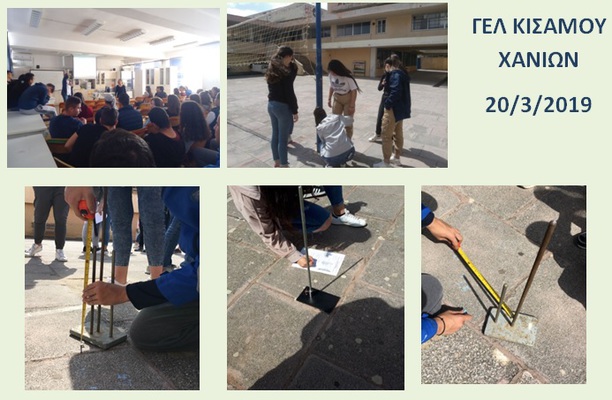
in Perugia - Italy:
Experiment eratostenes 3BGR-Lucia.pdf
Eratostene 3Am.pdf
